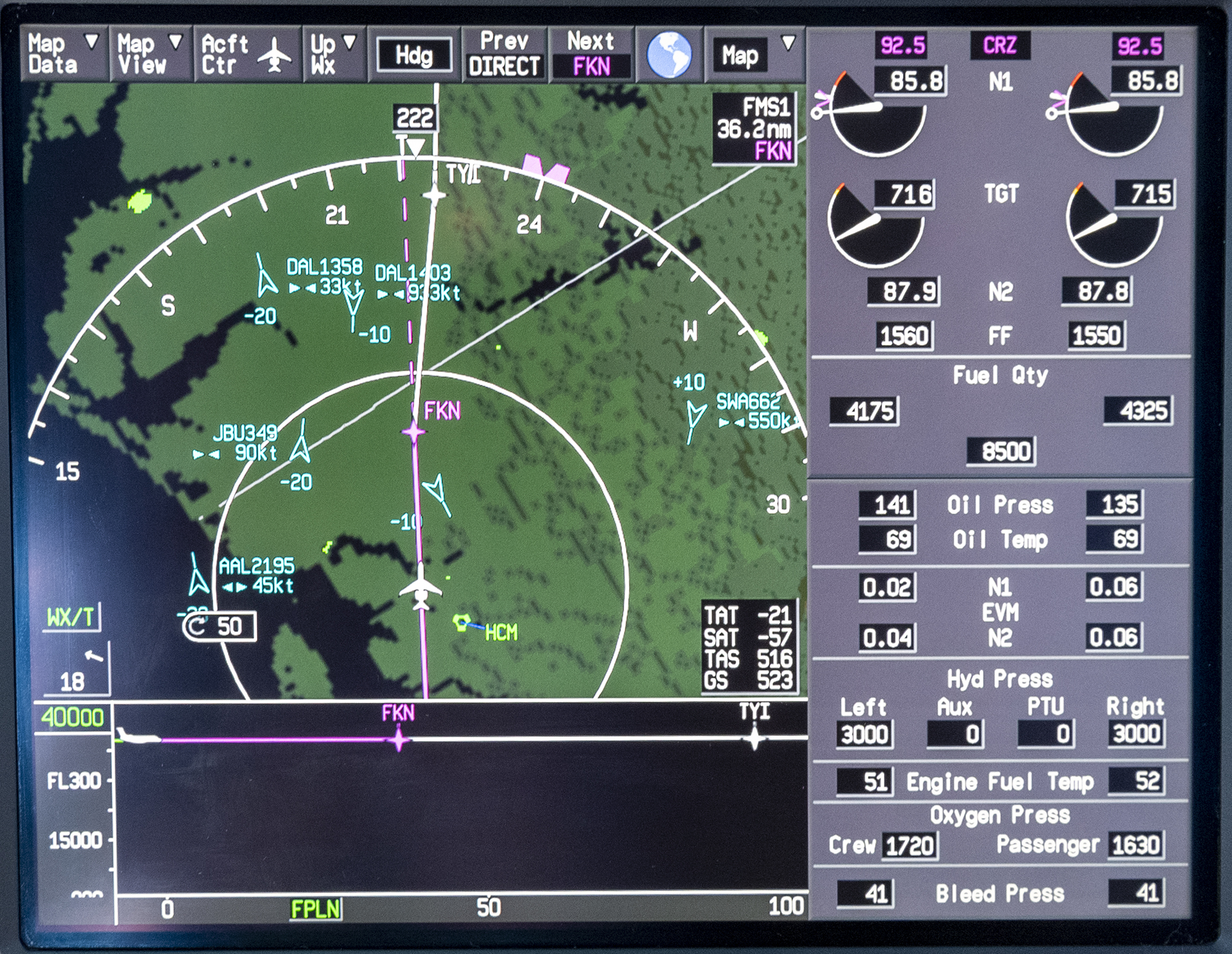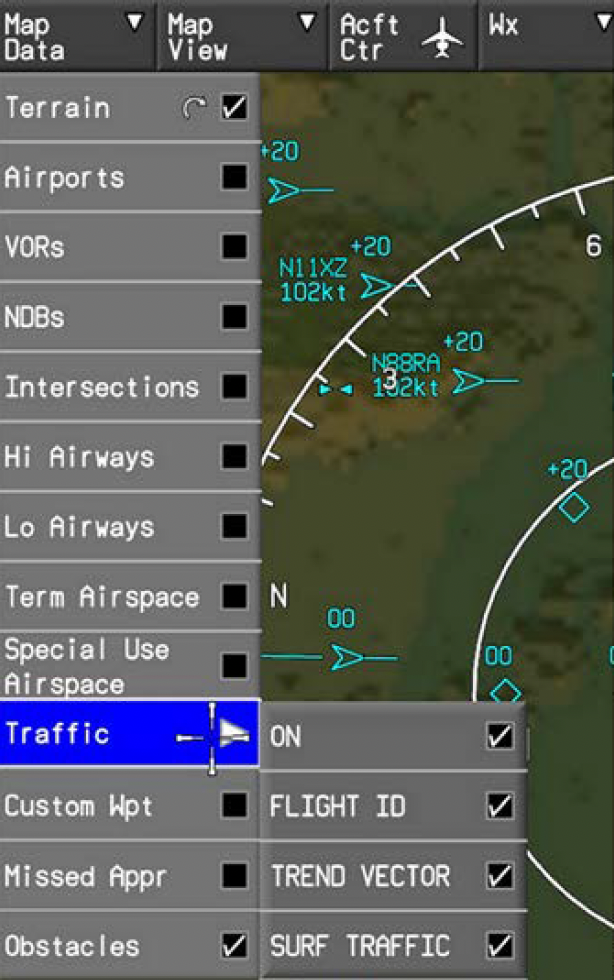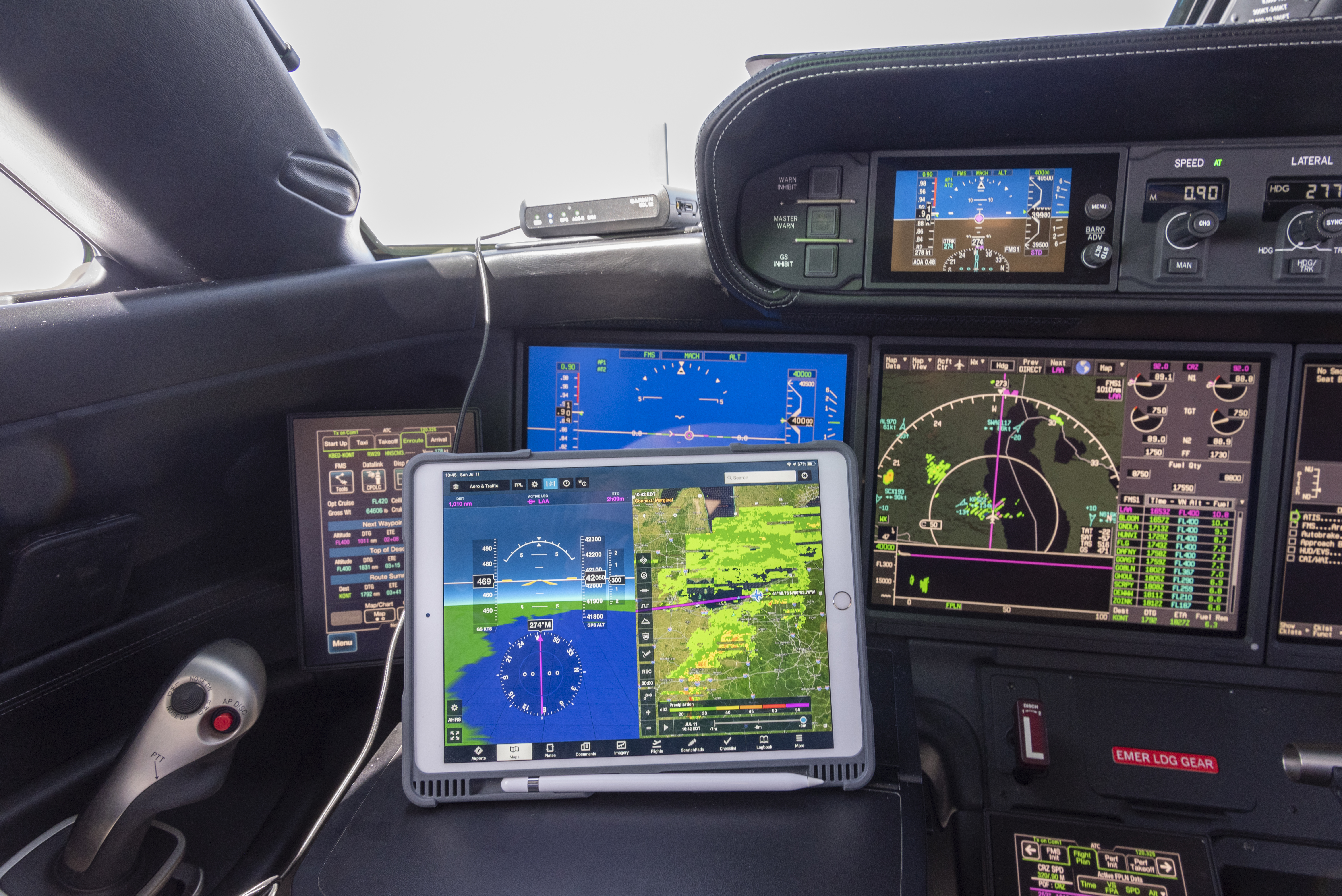As of the end of 2024, I don't know of any country where Automatic Dependent Surveillance-Broadcast In (ADS-B In) is required. But I can also tell you that ADS-B In greatly enhances safety and if you can have it installed, it is worth it.
— James Albright

Updated:
2025-01-14
It is quite often called Cockpit Display of Traffic Information (CDTI) and symbology can mirror TCAS. But ADS-B In is so much more capable than TCAS. While the displayed position of a TCAS target is approximate, the ADS-B In target is precise. Plus you can get the Flight ID, differential speed, and a graphical trend vector.

1
ADS-B In and situational awareness
I've flown a number of aircraft with ADS-B In but the one I am most familiar with is the Gulfstream GVII where it is known as the Cockpit Display of Traffic Information (CDTI). It is always available in the map displays but it defaults to a decluttered view. If you want the Flight ID, a trend vector, and to have surface traffic diplayed, you have to ask for it as shown here.
Source:
There is no specific authorization to use ADS-B In for traffic situational awareness. Installation of ADS-B In equipment is not required for compliance with § 91.225 or § 91.227. However, aircraft owners and operators who choose to voluntarily equip with ADS-B In avionics will achieve greater benefit from the technology through improved traffic situational awareness on the ground and in the air.
Note: This AC only addresses ADS-B In systems installed consistent with AC 20-172, Airworthiness Approval for ADS-B In Systems and Applications, and meeting TSO-C195a (or later revision), Avionics Supporting Automatic Dependent Surveillance-Broadcast (ADS-B) Aircraft Surveillance Applications (ASA).
2.4.1 ADS-B In Systems. Most ADS-B In systems will include a flight deck traffic display depicting the relative position and related information of ADS-B-equipped aircraft presented on a plan view. This traffic display is only one component of the input and output devices collectively known as a Cockpit Display of Traffic Information (CDTI). The traffic display may be on a dedicated display or integrated into and presented on an existing display (e.g., navigation display (ND) or multifunction display (MFD)). The terms traffic display and CDTI are used interchangeably when the meaning is clear in context. In many installations, a moving map depicting key surface elements of the airport may be displayed when on the ground or within a predefined altitude/distance from an airport while airborne.
Note: ADS-B Traffic Advisory System (ATAS) is an ADS-B In application intended specifically for General Aviation (GA) use that will incorporate an audio traffic alerting capability. There is a configuration in which the display is optional for aircraft that cannot accommodate a display.
2.4.2 Operation. The CDTI will display nearby ADS-B Out traffic and may also display TIS-B traffic, depending on the installation and operating airspace. The display may have functionality to allow the pilot to select a target to obtain additional information that might not be automatically displayed, such as distance from own-ship and groundspeed (GS). The system will also provide range selection and declutter functionality. More advanced ADS-B In systems may also include certified functionality to perform ADS-B In procedures described in the appendices of this AC.
Note: For traffic situational awareness, pilots are encouraged to incorporate the display in their normal scan to aid in the early detection of nearby traffic when in visual conditions and to aid in understanding the flow and amount of nearby traffic when in instrument conditions. However, the traffic display is not intended to be used for self-separation or to deviate from an ATC clearance. Should questions arise about a potential conflict with traffic while on an instrument flight rules (IFR) clearance, the pilot should query ATC. Pilots are also cautioned to not allow the display to become a distraction from the primary task of flying the aircraft, or scanning outside for traffic. Finally, pilots are cautioned against unnecessarily communicating on the ATC frequency about traffic observed on the traffic display.
2.4.3 Limitations. Pilots should understand the proper use and limitations of their equipment and should adhere to the following:
2.4.3.1 Only use the traffic display to supplement what can be seen out the window (OTW), except when authorized to conduct ADS-B In operations described in the appendices of this AC. Pilots must always conduct OTW scans to see and avoid as required under § 91.113(b).
2.4.3.2 Unless specifically certified for the function, the traffic display is not intended for collision avoidance or self-separation.
2.4.3.3 Not all ground and airborne traffic will appear on the traffic display. The traffic display can only display properly equipped ADS-B Out traffic broadcasting on the received frequencies, and, depending on the operating location, ADS-SLR, ADS-R, TIS-B, and/or Traffic Alert and Collision Avoidance System (TCAS) (if installed) traffic. Additionally, the completeness of the traffic situational awareness information is affected by range, signal quality, and proper installation and function of the ADS-B Out system on the traffic aircraft.
2.4.3.4 Unless initiated by the controller, pilots should typically not use the call sign or Aircraft Identification (ACID) of observed traffic in radio communications, as this could create confusion for both ATC and pilots monitoring the frequency.
2.4.3.5 In multipiloted aircraft, establish and comply with crew coordination procedures on the use of the CDTI and ADS-B In information to minimize head-down time.
2.4.3.6 Use of the traffic display does not change pilot or controller responsibilities.
2.4.3.7 If at any time the presented information becomes unreliable, inoperative, or a distraction, disregard the information presented on the traffic display.
2.4.3.8 In TCAS-equipped aircraft, ADS-B In traffic display information does not change existing procedures for response to a traffic advisory (TA) and/or Resolution Advisory (RA).
AC 90-114, ¶2.4
The AC makes frequent reference to the appendices for advanced uses of ADS-B In.
Appendix A provides a description of ADS-B-enabled In-Trail Procedure (ITP). ITP is designed primarily for nonradar oceanic arispace. As of this writing, I'm not aware of any airspace where it has yet been adopted, but it does look to be a promising capability. ICAO Doc 4444 makes provisions for this, calling it "Performance-Based Longitudinal Separation Minima." You could, for example, be given clearance to follow a specified distance behind another aircraft. Clearances are requested and given in free text. Refer to Appendix A for more information.
Appendix B provides a description of Cockpit Display of Traffic Information (CDTI) Assisted Visual Separation (CAVS). CAVS helps crews to maintain separation with other aircraft during the approach phase. There is no new phraseology and ATC will be unaware that the crew is using CAVS. The pilot is simply using CDTI to help when directed to "maintain visual separation" with another aircraft.
2
Portable ADS
ADS-B In isn't required so it is rarely "standard equipment" for new aircraft. For our aircraft, back in 2019, it was only available as an option packaged with other situational awareness items and it wasn't cheap. (Over $200,000)
You can, however, buy a portable ADS-B In unit that will provide the Cockpit Display of Traffic Information (CDTI). We have such a unit that we use when flying oceanic, shown here:
There are several portable units available. We chose the Garmin GDL 52 Portable Sirius XM / ADS-B Receiver, available a Amazon for $1,149.
We've added this to our cockpit for oceanic flights to have a back up in case of a highly unlikely loss of aircraft GPS and attitude information. The GDL 52 also provides a back up attitude indicator. If things really go badly when crossing the pond, the unit can get you to an airport and even keep you right-side-up until you can see the ground. I think, theoretically, you could shoot an instrument approach on it. (But I wouldn't recommend it.)
References
(Source material)
Advisory Circular 90-114B, Change 1, Automatic Dependent Surveillance-Broadcast Operations, 12/15/22, U.S. Department of Transportation



